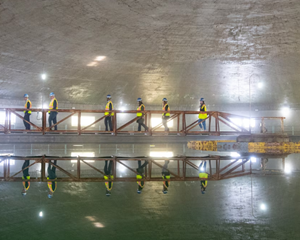Most U.S. residents don't need to worry about the safety of their tap water, but millions of Americans are still exposed to contaminants every year.
大部分美國居民都不需要擔心家中自來水的水質安全與否,但每年還是有數百萬美國人會暴露在污染物之中。
It can take a water crisis to highlight where drinking water infrastructure is failing.
或許要碰到飲用水危機,才能凸顯供水基礎設施之不足。
One of the most devastating water crises in recent memory was the lead contamination in Flint, Michigan's drinking water in 2014.
大家都還記憶猶新的嚴重用水危機之一,是2014年密歇根州弗林特的飲用水鉛污染事件。
As of January 2023, nine years after the initial contamination, residents are still dealing with the effects.
但一直到2023年1月,距最初的污染事件都已經九年了,該地居民都還在面對該事件的影響。
And in 2022 year, a water crisis in Jackson, Mississippi left many of the city's 150,000 residents without potable water.
而在2022年,密西西比州杰克遜發生的一場用水危機,也導致該市約15萬名居民無法獲得安全的飲用水。
Here, drinking water experts from the EPA, academia, and advocacy groups weigh in on what you need to know about your tap.
在這篇文章中,來自美國國家環境保護局(EPA)、學術界和倡議團體的飲用水專家將分享你需要了解的自來水相關信息。
In the U.S., about 90 percent of people get their tap water from a public water system (PWS).
美國約有90%的人口是使用公共供水系統(PWS)提供的自來水。
Water from a lake, reservoir, river or aquifer is piped into a water treatment facility where chemicals are added to the water that bind to pollutants and are sifted out of the system.
來自湖泊、水庫、河流或地下水層的水被輸送到凈水處理廠、并加入化學物質,當這些物質與污染物結合之后,就會被過濾排除。

Some facilities also use bacteria-killing UV light.
有些凈水廠還會使用紫外線(UV)來殺菌。
Chemical disinfectants such as chlorine or chloramine are then added to the water to help kill any pathogens remaining in the water and any that might be lurking in your pipes when the water travels to your home.
之后,凈水廠會在水中加入像是氯或氯胺之類的化學消毒劑,來消滅殘留在水中以及輸送過程中可能藏在管道內的病原體。
Byproducts result when water, itself a chemical, mixes with chemical disinfectants. But these aren't always easy to discern.
水本身就是一種化學物質,當水與化學消毒劑混合時,就會產生副產物。但這些副產物不見得能夠被輕松辨別出來。
A new study recently isolated and defined chloronitroamide, a byproduct of of chloramine that has been present in tap water for years but difficult to identify from other byproducts.
最近的一項研究分離出并定義了一種來自氯胺的副產物--氯硝酰胺,這種物質多年來一直存在于自來水中,但由于和其他副產物混雜在一起,所以難以識別。
It's not known to be toxic, but the study illustrates how complicated monitoring tap water for millions of Americans can be.
目前還不清楚這東西是否有毒,但這項研究也突顯出,要為數百萬美國人監控自來水是一件多復雜的事。
Some water treatment facilities, from lack of funding or too little oversight, don't effectively clean their water.
有些水處理設施因為缺乏資金或監管不足,因此不能有效清潔用水。
In 2015, about 21 million people living in the U.S. were exposed to tap water that violated federal guidelines, according to a study published in 2018.
根據2018年發表的一項研究,在2015年,約有2100萬美國人接觸到的是不符合聯邦指導方針的自來水。
Unsafe and therefore illegal levels of pathogens (bacteria and viruses), nitrates, arsenic, and harmful byproducts were the most common sources of violations, says Maura Allaire, study author and a water quality expert at the University of California, Irvine.
該研究的作者、加州大學爾灣分校的水質專家茉拉·阿萊爾表示,因為不安全而含量高到違法的病原體(細菌和病毒)、硝酸鹽、砷和有害副產品,是最常見的違規來源。



